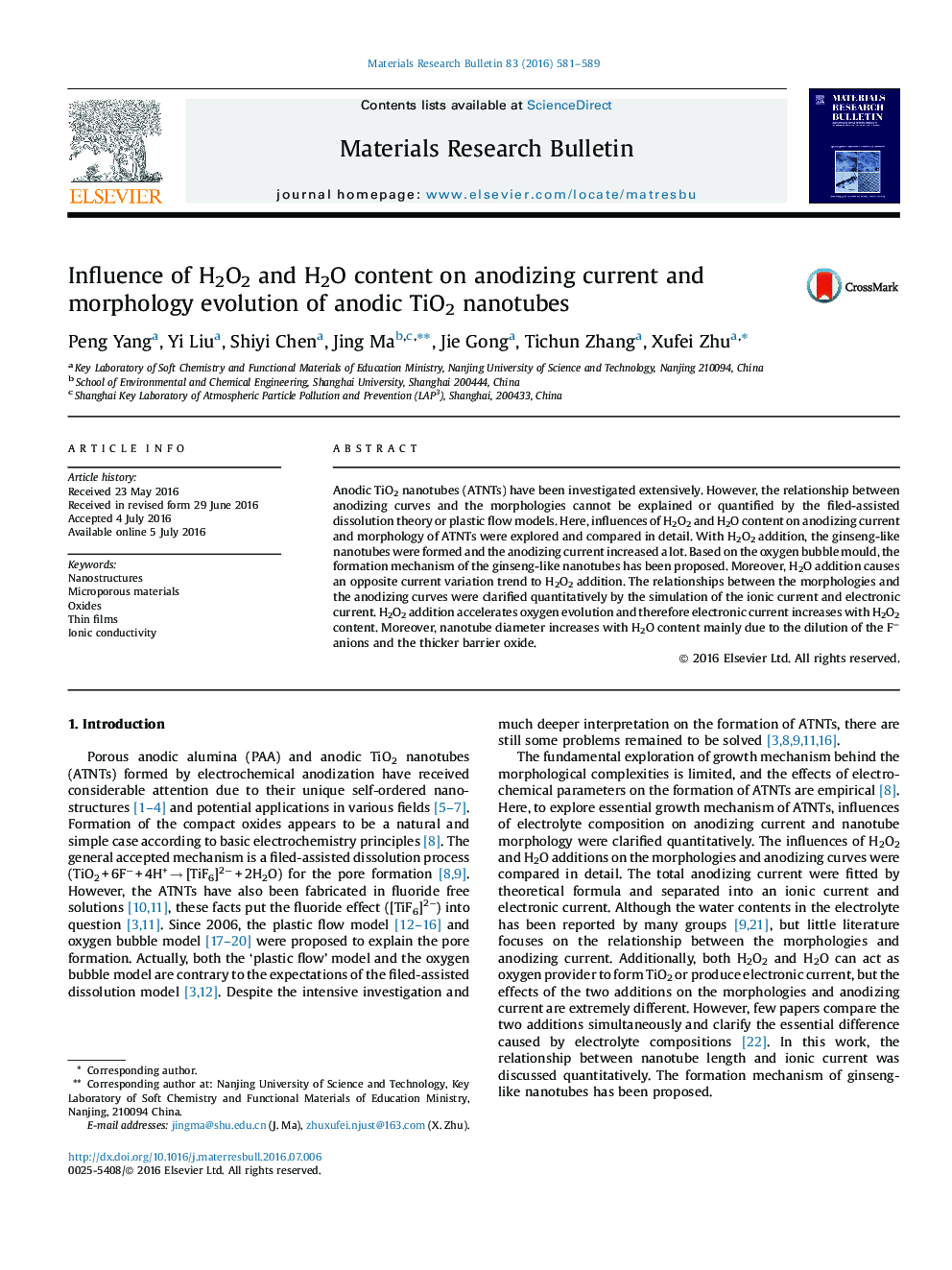| Article ID | Journal | Published Year | Pages | File Type |
|---|---|---|---|---|
| 1487070 | Materials Research Bulletin | 2016 | 9 Pages |
•The influences of H2O2 and H2O on the morphologies and anodizing current were compared.•The formation mechanism of ginseng-like nanotubes is proposed for the first time.•The thickness of barrier oxide is inversely proportional to equilibrium ionic current.•The relationships between the morphologies and ionic current were analyzed quantitatively.
Anodic TiO2 nanotubes (ATNTs) have been investigated extensively. However, the relationship between anodizing curves and the morphologies cannot be explained or quantified by the filed-assisted dissolution theory or plastic flow models. Here, influences of H2O2 and H2O content on anodizing current and morphology of ATNTs were explored and compared in detail. With H2O2 addition, the ginseng-like nanotubes were formed and the anodizing current increased a lot. Based on the oxygen bubble mould, the formation mechanism of the ginseng-like nanotubes has been proposed. Moreover, H2O addition causes an opposite current variation trend to H2O2 addition. The relationships between the morphologies and the anodizing curves were clarified quantitatively by the simulation of the ionic current and electronic current. H2O2 addition accelerates oxygen evolution and therefore electronic current increases with H2O2 content. Moreover, nanotube diameter increases with H2O content mainly due to the dilution of the F− anions and the thicker barrier oxide.
Graphical abstractFigure optionsDownload full-size imageDownload as PowerPoint slide
